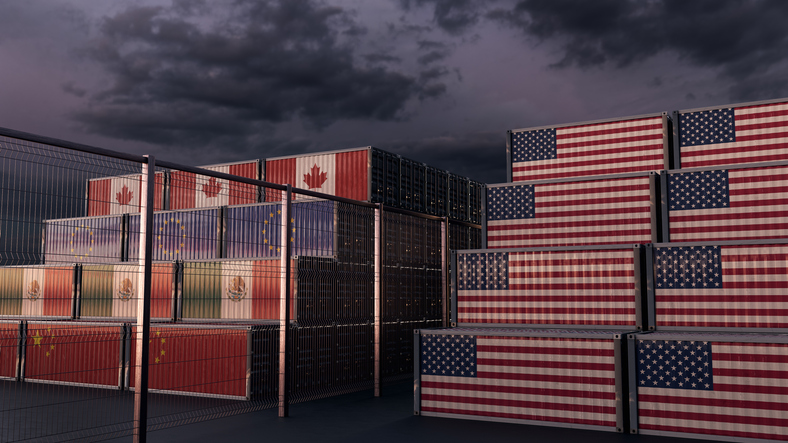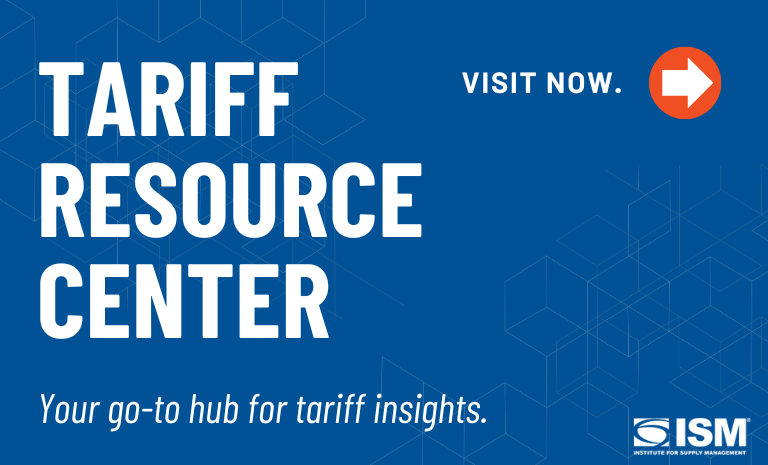Tariffs and Logistics: Implications, Strategies and Peak Season

Tariffs are a continuing uncertainty for organizations and their supply chains. Not only are the duties affecting pricing, sourcing and production, but they are impacting the logistics sector.
Softer freight volumes and an increased focus on load density are just some of the effects, says Larry Parker Jr., Ph.D., department chair of supply chain and logistics at the Dr. Wallace Boston School of Business at the American Public University System.
“Tariffs are now another planning variable, not an exception,” says Parker, who also is founder and president of PKR Services, a business and management consulting firm. “The best supply chain planners treat tariffs like fuel surcharges, and other charges that are expected to move within a range.”
He offers additional thoughts on the current tariffs/logistics environment:
Question: How are businesses handling the ever-changing tariffs? How can they plan for this?
Answer: Most experienced businesses have learned to treat tariffs as another variable expense within their logistics planning models. Tariffs were more stable and predictable before this recent trade volatility era.
Some of the more common and effective strategies are multi-sourcing for supplies, agile contracts, and scenario-based procedures for product offerings. A multi-sourcing approach is much like it sounds. Companies that have learned from past tariff disruptions are coordinating multiple sources of supply that have different tariff vulnerabilities. The initial supplier is still preferred, but if an extremely high tariff were to be imposed, a secondary supplier (can be) more cost-effective.
Agile contracts factor in tariff volatility and include clauses to cancel or modify the contract as needed.
Q: What are the short- and long-term implications of tariffs on the end-to-end supply chain?
A: Within in the next 12 months, (1) rapid shifts in alternate sourcing to mitigate immediate tariff exposure and (2) port and warehouse congestion as companies front-load inventory ahead of tariff deadlines.
Over the long-term (at least three years), (1) likely redesigning supply chain networks to Mexico and Southeast Asia, with domestic final assembly, and (2) redesign products to use parts that have fewer tariffs.
Q: What are the short- and long-term implications of tariffs on the economy?
A: In the short term, tariffs compress profit margins, raise consumer prices, and moderate discretionary spending. Over the long term, tariffs drive the pursuit of other methods to regain the profit margins lost to tariffs. A business is likely to invest in automation and incorporating artificial intelligence solutions.
Q: Talk about tariffs and their impact on Christmas holiday stock and sales/consumers.
A: It’s been a mix of cautious and early ordering. Most major retailers learned valuable lessons during the coronavirus pandemic and port labor strikes that disrupted supply chains. Companies that could afford to order things prior to the tariffs taking affect did so. Regardless of whether they order early or as needed, all businesses are more cautious. They order items that have higher profit margins and more proven record of sales. So, the consumer has a variety of options this holiday season.
Q: How is the logistics industry faring given all the uncertainty?
A: Freight volumes have softened. This has benefitted the shippers, providing them an opportunity to renegotiate carrier contracts more in their favor. A leading freight index continues to show moderation across truckload and parcel, suggesting normalization after the coronavirus pandemic surge.
Carriers are now more focused on density of loads and efficiency of operations. Many are leveraging digital tools to reduce “empty miles,” which is ensuring every inch of a cargo space is utilized. Carriers are now using planning tools to combine loads moving in the same direction if it increases profitability.
Q: Is consumer spending down, thus impacting shipping and last-mile delivery?
A: Yes, consumers are being more selective. It’s not a dramatic decrease at this point, but it’s enough to signal to carriers like Amazon operating within the last-mile space to make operational changes.
Last-mile carriers are following the efficiency trends of the over-the-road (OTR) carriers by consolidating loads and optimizing routes. For example, delivery to Amazon lockers reduces driver delivery times and fuel costs, although consumers may enjoy delivery to their front door.
These carriers also are benefiting by offering Amazon lockers as theft-safe alternatives to leaving packages on the porch.

